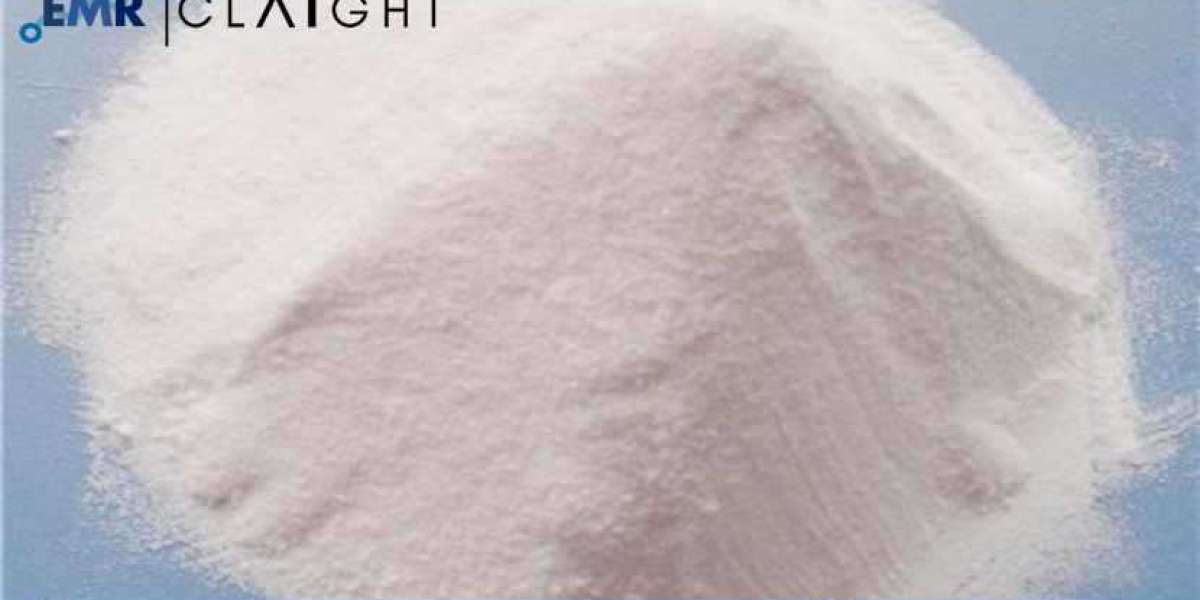Introduction
Magnesium sulfide (MgS) is an inorganic compound primarily used in the production of various magnesium-based products, including fertilizers, chemicals, and materials for the steel industry. The growing demand for magnesium sulfide across industries such as agriculture, chemical manufacturing, and metal production makes the establishment of a magnesium sulfide manufacturing plant a viable business opportunity. This Magnesium Sulfide Manufacturing Plant Project Report outlines the key aspects of setting up a magnesium sulfide manufacturing plant, including market analysis, raw materials, manufacturing processes, machinery requirements, and financial considerations.
Market Overview
The global magnesium sulfide market is driven by several factors:
Agricultural Demand: Magnesium is a crucial nutrient for plant growth, and magnesium sulfide is used in fertilizers to enhance soil quality and boost crop yield. The rise in global food production to meet population growth is fueling demand for magnesium-rich fertilizers.
Chemical Industry Applications: Magnesium sulfide is used in the production of various chemicals, including magnesium hydroxide and magnesium oxide, which are essential in several industrial processes.
Metallurgical Applications: The steel industry utilizes magnesium sulfide as a deoxidizing agent and in the production of specialty alloys, driving further demand.
Growing Awareness of Sustainable Practices: The increasing emphasis on sustainable agricultural practices is encouraging the use of magnesium fertilizers, thus boosting the magnesium sulfide market.
Given these trends, establishing a magnesium sulfide manufacturing plant can provide a profitable venture with significant growth potential.
Get a Free Sample Report with Table of Contents @
Project Overview
1. Location Selection
Selecting the right location for the manufacturing plant is crucial for operational efficiency and profitability. Key factors to consider include:
Proximity to Raw Material Sources: The plant should be near suppliers of magnesium-rich materials, such as magnesium oxide or magnesium carbonate, to minimize transportation costs.
Infrastructure: A suitable location should have reliable infrastructure, including access to utilities (water, electricity), transportation networks (roads, railways), and logistics facilities for distribution.
Regulatory Environment: The region should have a supportive regulatory framework for chemical manufacturing, including compliance with environmental and safety regulations.
2. Raw Materials
The production of magnesium sulfide requires several key raw materials:
Magnesium Oxide (MgO): This is the primary source of magnesium used in the production of magnesium sulfide.
Sulfur or Sulfuric Acid: Sulfur is necessary for the synthesis of magnesium sulfide.
Water: Water is needed in various stages of the production process, particularly during the reactions and cooling phases.
Establishing reliable supply chains for these materials is crucial for uninterrupted production.
3. Manufacturing Process
The manufacturing process for magnesium sulfide typically involves the following steps:
Step-by-Step Manufacturing Process:
Raw Material Preparation: The first step involves the preparation of raw materials, including grinding magnesium oxide and sulfur to desired particle sizes to ensure effective reactions.
Synthesis Reaction: The primary synthesis reaction occurs in a controlled environment, usually a reactor. Magnesium oxide is reacted with sulfur at elevated temperatures to produce magnesium sulfide. The reaction can be represented as:
MgO+S→MgS+O\text{MgO} + \text{S} ightarrow \text{MgS} + \text{O}MgO+S→MgS+OCooling: After the synthesis, the reaction mixture is allowed to cool. This step is crucial for stabilizing the magnesium sulfide produced.
Separation and Purification: The cooled mixture undergoes separation processes to isolate magnesium sulfide from any unreacted materials and by-products. Purification techniques may involve washing and drying.
Quality Control: The final product is subjected to quality control testing to ensure it meets industry standards and specifications. Tests may include particle size analysis, purity checks, and moisture content assessment.
Packaging: Once quality control is complete, magnesium sulfide is packaged in suitable containers for distribution to customers.
4. Machinery and Equipment
Setting up a magnesium sulfide manufacturing plant requires specific machinery and equipment, including:
Ball Mills: For grinding raw materials like magnesium oxide and sulfur to the required particle size.
Reactor Vessels: For conducting the synthesis reaction under controlled temperature and pressure conditions.
Cooling Systems: For cooling the reaction mixture after synthesis.
Separation Equipment: For isolating and purifying magnesium sulfide from unreacted materials.
Quality Control Instruments: For testing the final product's quality and ensuring compliance with industry standards.
Investing in modern equipment and automation can enhance efficiency, reduce labor costs, and improve product quality.
Financial Considerations
1. Capital Investment
Establishing a magnesium sulfide manufacturing plant requires significant capital investment. Key areas of expenditure include:
Land and Infrastructure: Costs associated with purchasing land and constructing manufacturing facilities that comply with safety and environmental regulations.
Machinery and Equipment: The purchase of equipment for grinding, synthesis, cooling, separation, and quality control represents a major investment.
Working Capital: Funds are required for initial raw material purchases, labor costs, and operational expenses.
2. Operational Costs
Operational costs will include:
Raw Materials: Expenses related to sourcing magnesium oxide, sulfur, and water.
Labor Costs: Salaries for skilled and unskilled workers involved in the manufacturing process.
Utilities: Expenses for electricity, water, and other essential services.
Maintenance: Ongoing maintenance costs for machinery and equipment.
Effective cost management strategies, such as negotiating bulk purchase agreements with suppliers and optimizing the production process, can enhance profitability.
3. Revenue and Profitability
Revenue generation will depend on production capacity, product pricing, and market demand. The magnesium sulfide manufacturing business can be profitable, especially if the plant can produce high-quality products at competitive prices.
Factors influencing profitability include:
- Market Demand: Understanding and adapting to market trends can help align production with consumer needs.
- Product Quality: Ensuring high-quality products can lead to repeat customers and establish a strong market reputation.
- Cost Efficiency: Reducing production costs through process optimization and efficient resource management can improve profit margins.
FAQs
1. What are the main applications of magnesium sulfide?
Magnesium sulfide is primarily used in fertilizers, chemical manufacturing, and metallurgical applications in the steel industry.
2. What are the primary raw materials needed for magnesium sulfide production?
The main raw materials include magnesium oxide and sulfur or sulfuric acid.
3. What is the key manufacturing process for magnesium sulfide?
The key process involves the synthesis of magnesium oxide with sulfur under controlled conditions, followed by cooling, separation, purification, and quality control.
4. What are the potential challenges in establishing a magnesium sulfide manufacturing plant?
Challenges may include sourcing quality raw materials, complying with regulatory requirements, managing operational costs, and ensuring product quality.
5. How can a magnesium sulfide manufacturing plant ensure profitability?
Profitability can be achieved by optimizing production efficiency, maintaining high product quality, adapting to market trends, and managing costs effectively.
Related Reports
https://www.expertmarketresearch.com/reports/virtual-reality-gaming-market
https://www.expertmarketresearch.com/reports/jackfruit-market
https://www.expertmarketresearch.com/articles/top-5-companies-in-the-global-sodium-glutamate-market
Media Contact:
Company Name: Claight Corporation
Contact Person: Lewis Fernandas, Corporate Sales Specialist — U.S.A.
Email: sales@expertmarketresearch.com
Toll Free Number: +1–415–325–5166 | +44–702–402–5790
Address: 30 North Gould Street, Sheridan, WY 82801, USA
Website: www.expertmarketresearch.com
Aus Site: https://www.expertmarketresearch.com.au














